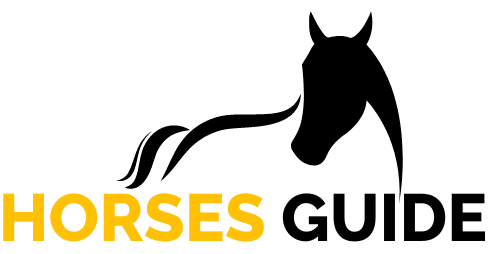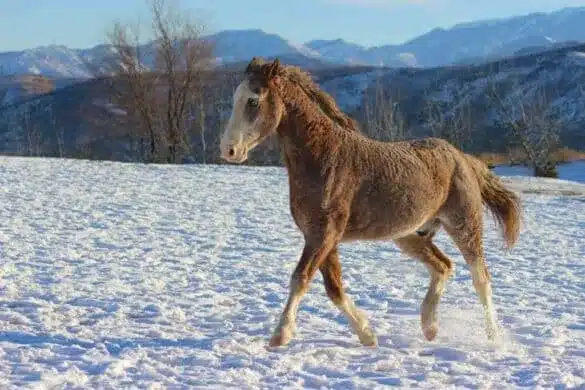Table of Contents
If you’re a horse enthusiast, you must know how various kinds of horses exist on this planet. The curly-haired horse is one such kind. Now, if you’re looking for a unique kind of horse breed, this one is unique. Keeping horses is an art. Whether it’s your majestic shire horse or any other horse breed, you need to know all about them. Especially if you’re thinking of initiating a horse stable, from all kinds of diseases they carry to certain colors they come in, you need to keep yourself updated with every little thing. Now, you must be thinking about where to learn about these animals. Well, worry, not as you are in the right place. We will find everything here from these breeds; what is the reason behind these curly haired horses to their long hair coats. Hence, let us discover the beauty of horses in even more depth.

Curly Haired Horse
Now, let’s learn why this breed is called the curly horse. The American Bashkir Curly, sometimes called the Curly Haired Horse, is a rare breed that stands out from other equine companions thanks to its curly coat. Due to their unique look and alleged hypoallergenic properties, these horses have become more well-known despite discussions about their genetic heritage and origins. Horses with curly hair might have a variety of genetic abnormalities, but generally speaking, the Curly breed is not too unhealthy. There is mixed evidence in specific research suggesting hypoallergenic qualities. However, these horses are versatile in various riding disciplines, drawing owners looking for an eye-catching and versatile partner. First things first, let’s understand the history of these horses.
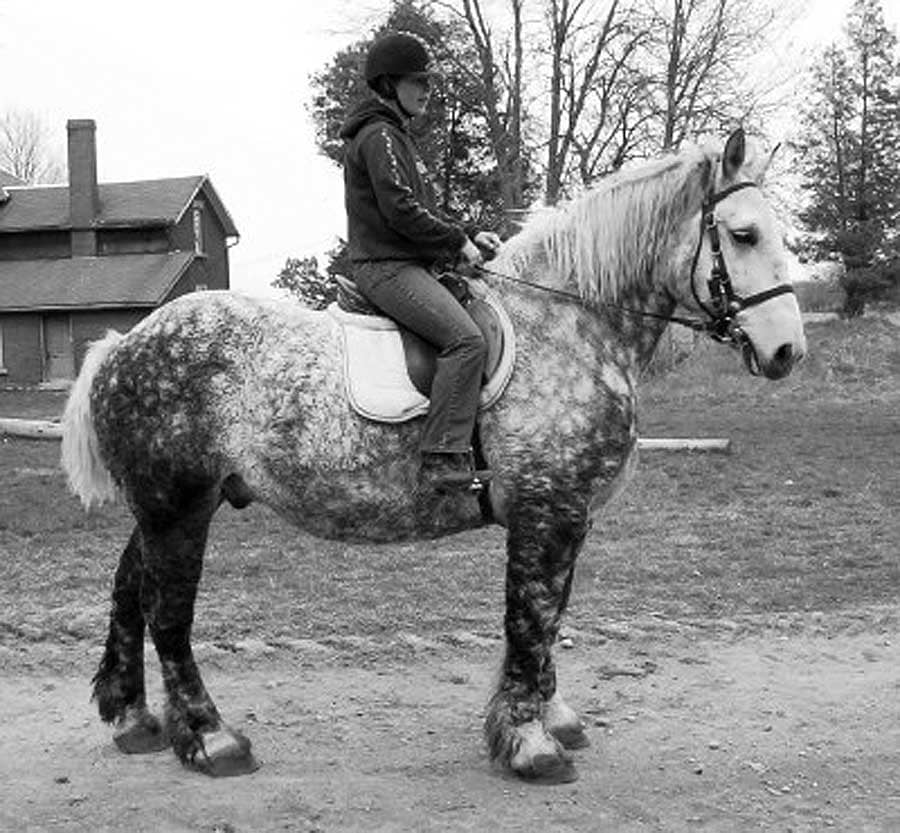
Curly Hair Horse Breed: The Origin
Curly-coated horses have a lengthy history; they first appeared around 161 AD in Chinese art. They have cold climate adaptations. Reports from as far back as the 1700s describe populations that are dispersed over Asia, Europe, and South America. Native Americans on the Great Plains kept Curly Horses in the 1800s. Although not a direct ancestor of the Bashkir horse, the modern American Bashkir Curly is inspired by the Damele family’s early 1900s breeding program. Two genetic mutations responsible for curly coats have recently been found in separate equine populations, indicating that different breeds may display this characteristic.
Although they are classified as a separate breed in North America due to a common mutation, North American Curly Horses are genetically related to Quarter Horses, Morgans, Saddlebreds, and Standardbreds. The modern Curly Horse breed originated in the twentieth century from a mix of these types and feral horses from the Great Basin.

Horses with Curly Hair: Structure and Shape
Physical attributes
- Height and Measurements
Curly-haired horses are usually about 15 hands tall, with a pleasing balance of proportions.
They are solid and agile due to their compact bodies, deep heart girths, and short backs.
- Facets
They are known for having big eyes with curled lashes that enhance their attractive appearance.
Their wavy hair elegantly surrounds their face, emphasizing their somewhat short ears.
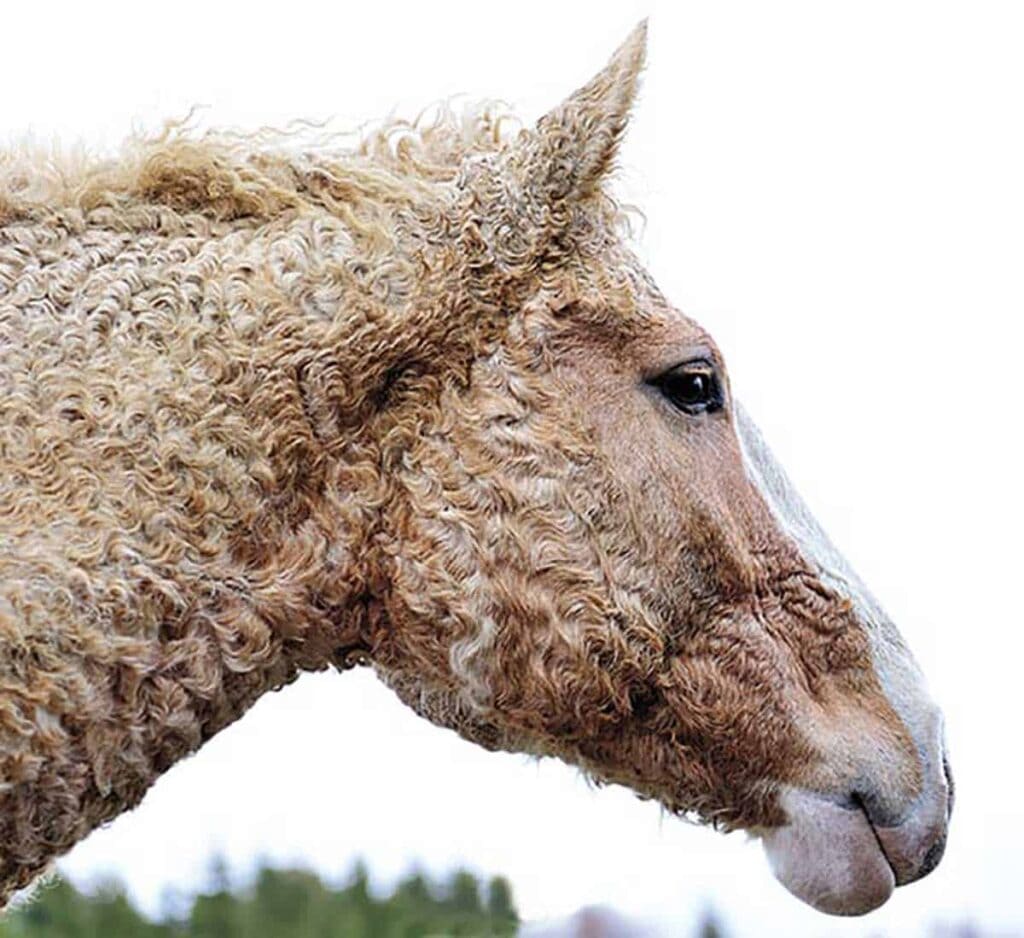
Body and Neck
The medium-length necks of curly-haired horses are deep at the base, adding to their overall grace and elegance.
Their bodies’ long underlines and flat groups improve their athleticism and movement efficiency.
- Leg Shape
The solid and stable legs are a result of their large bones.
Their broad, hefty hooves and short cannons give them strength and endurance, making them ideal for various jobs.
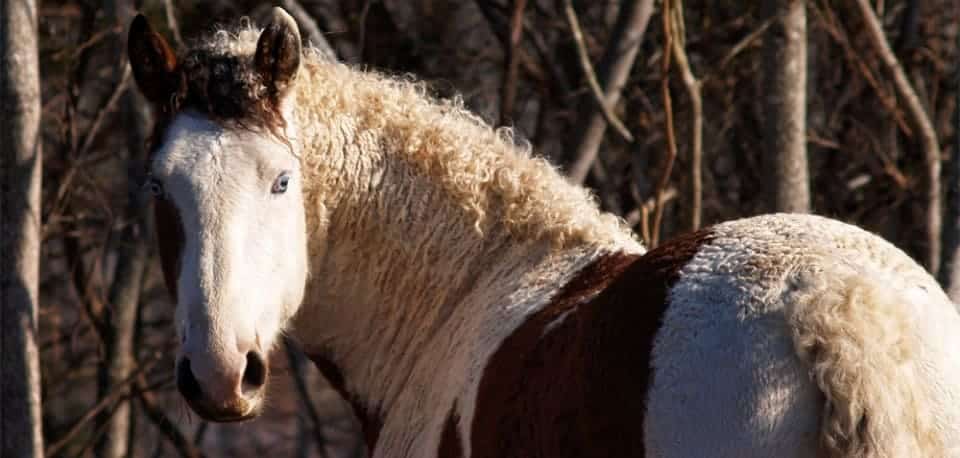
Curly Haired Horse: A Glimpse into the Colors
Curly-haired horses are a visual feast for horse lovers, showcasing a fantastic assortment of coat colors. Chestnut is the most common color, giving off a cozy yet lively vibe. Black conveys sophistication and mystery, while bay jackets hint at traditional elegance. Grey coats are classic and visually striking due to their slight differences. Buckskin shines with a hint of gold, exuding grace and power. A captivating combination of hues is provided by roan coats, giving them an incredibly distinctive look. Grulla coats exude refinement with their stunning combination of smokey colors. Ethereal and graceful creme coats evoke a sense of purity and elegance. The Curly Haired Horse captivates with its varied color scheme, which ranges from earthy tones to ethereal hues. Each shade is a reflection of the horse’s innate beauty and uniqueness.
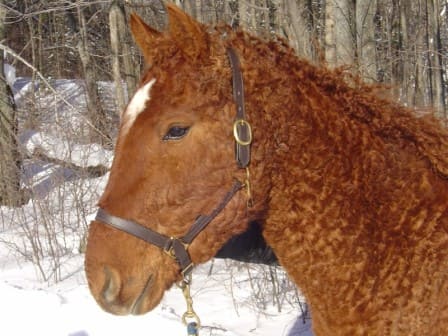
Chestnut
Warmth and vitality radiate from it.
Bay
Including a dash of traditional elegance.
Black
Conveying an air of refinement and mystery.
Grey
Adding a touch of modest diversity and timeless charm.
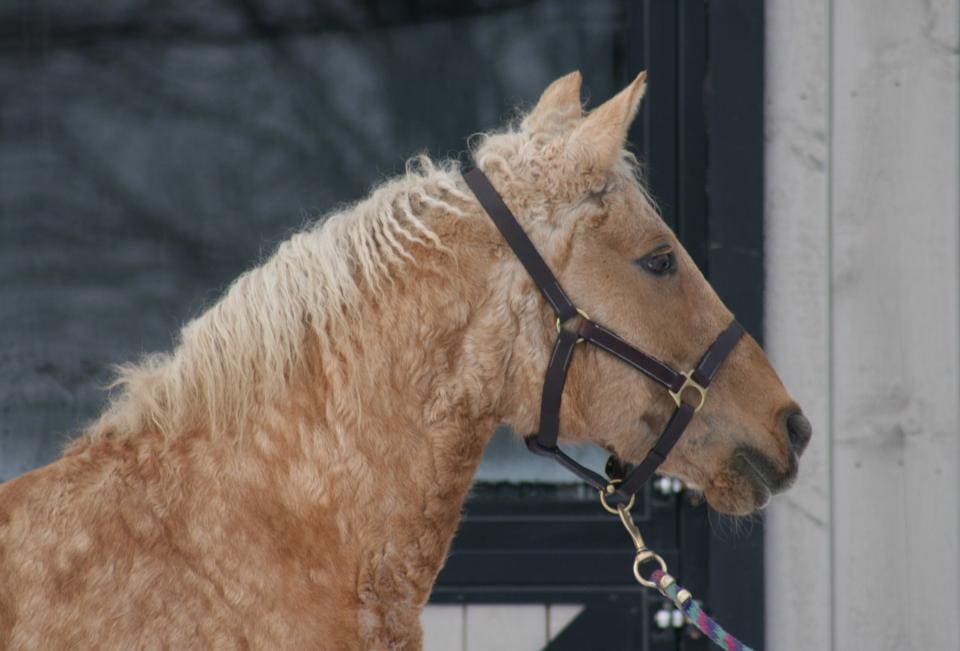
Buckskin
Radiating grace and strength with overtones of gold.
Roan
Providing a captivating color combination for an incredibly distinctive look.
Grulla
Reflecting refinement, this color combination of smokey tones is captivating.
Cremello
Charming with a dreamy beauty and representing grace and purity.

Coat Types of Curly-Haired Horses
- Differences in Curl Patterns
Curly horses display a variety of coat types with unique curl characteristics. Some have fine hair, and some have wiry hair. The body coat’s curls range from large ringlets to deep waves.
Regularly Curly Fetlocks
The fetlocks’ hair is perpetually long and has a constant curl or waviness.
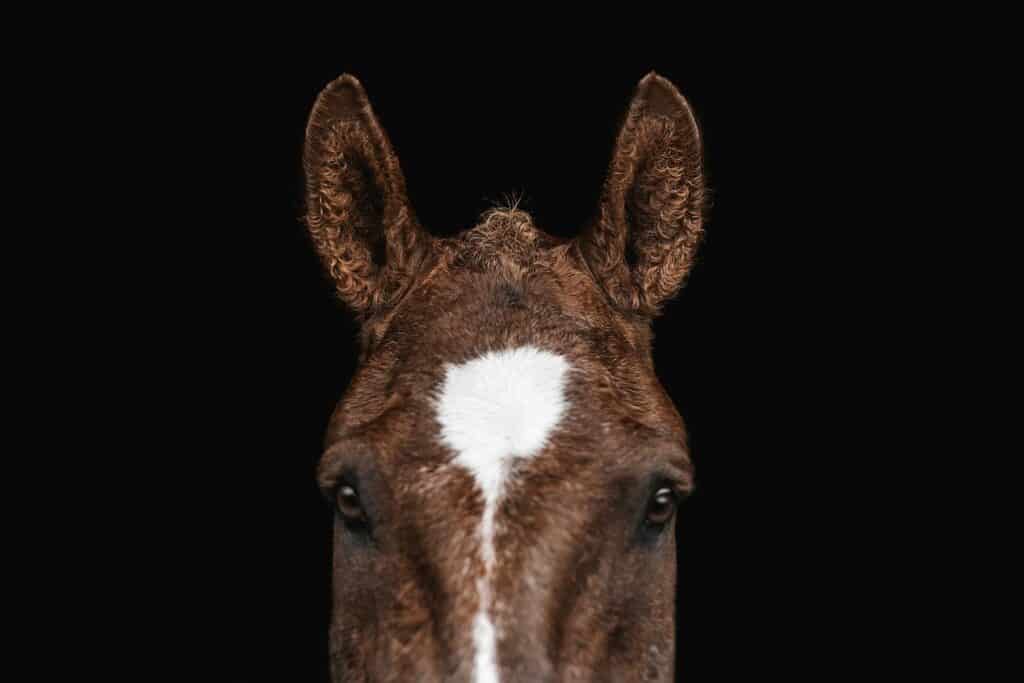
- Preference for Kinky Manes
Curly horses prefer their manes to be kinky, which adds to their unique look.
- Variations in Tails
Tails can be curly or have rings of curls. In the summer, some curly-haired horse lose their tails and manes, which adds to their unique appearance.
- The History of Curly Coats
The American Bashkir Curly, another name for the curly-haired horse breed, is distinguished by its curly coat. It makes them stand out from other breeds and increases their allure. Therefore, this breed is anything but ordinary.
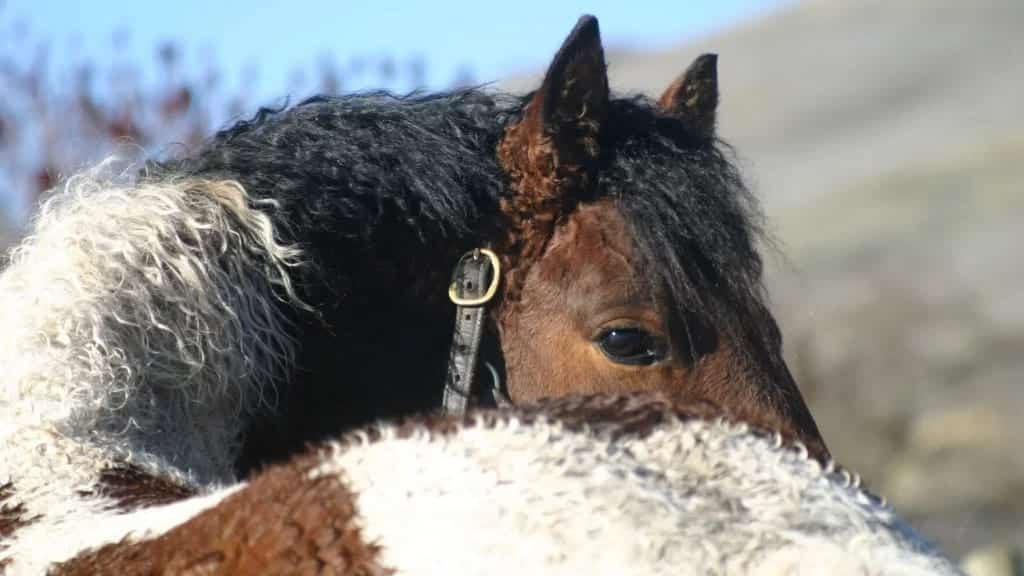
Some Health Problems with Curly-Haired Horses
Because of their long, thick coats, horses with curly hair, such as American Curly and Bashkir Curly horses breeds, are sometimes misdiagnosed with Cushing’s disease. Nonetheless, this curly coat is an innate characteristic unconnected to hormone imbalances. It can be challenging to diagnose disorders like PPID pituitary pars intermedia dysfunction, a pituitary gland disease in curly haired horse. Disease risk is influenced by genetic heritage; it is also found in older horses. Individuals descended from Quarter Horses may require testing for disorders like HYPP and PSSM. A mutation causing cerebellar abiotrophy (CA), a neurological condition common in Arabians, is present in some Curlies. It makes sense to test before breeding. In elderly horses with PPID, a long, curly coat and weight loss indicate PPID. A standard treatment is pergolide mesylate. For these unique horses, routine veterinary examinations are essential to managing health problems.
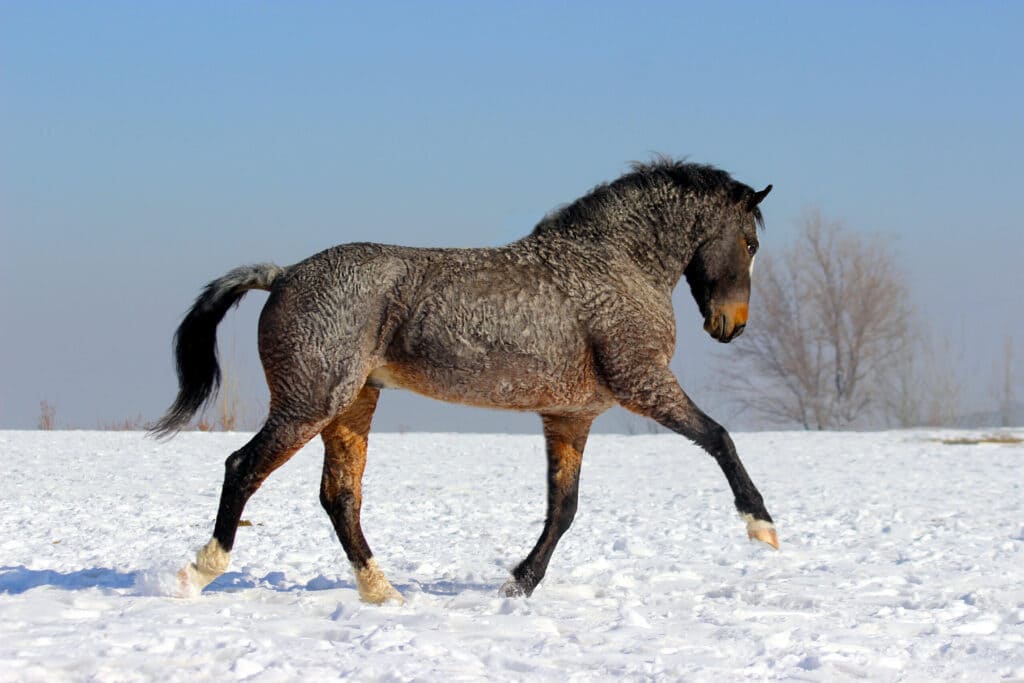
Final Thoughts
Coming to an end, the variety of equine genetics and physiology can be fascinatingly observed in the curly-haired horse breed. These horses stand out as a tribute to the creativity of nature because of their distinctive coat types, unique structures, and an array of colors. However, their unique look is accompanied by several health issues that can negatively impact their well-being, like equine metabolic syndrome and Cushing’s illness. Maintaining the health and vigor of curly-haired horses requires knowledge of the clinical signs of rapid and symptoms of these illnesses and appropriate management approaches.
In conclusion, breeders such as John Damele have garnered global recognition and admiration for the American Bashkir Curly, as have improvements in veterinary care. Curly-coated horses continue to capture the hearts of riders everywhere, whether riders appreciate them for their beauty or treasure them as cherished companions.


